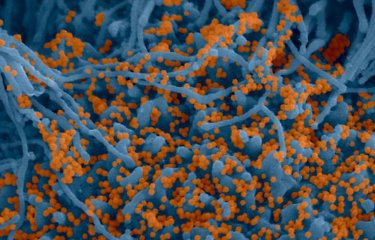-
Document de presse | 2014.03.10
Inauguration of a Regional Platform of Research on transmissible and emerging infectious diseases in Southeast Asia (PRR-Asia)
Southeast Asia (SEA) is affected by emerging infectious diseases, and emerging outbreaks challenge the medical and scientific communities. The emergence of new diseases or their resistance to anti-microbial drugs in SEA is a complex mechanism which requires more interest on the diseases, on the condition of their emergence and on the diffusion of the causative agents. The study of infection...
-
Document de presse | 2014.04.09
Chikungunya raises concern in the Americas
Despite the presence of potentially susceptible mosquitoes, the first autochthonous cases of chikungunya on the American continent were not reported until December 2013 when a severe epidemic struck the West Indies. In order to assess the risks of the virus being transmitted and spreading throughout the territory, scientists from the Institut Pasteur and Fiocruz (Brazil) undertook the most...
-
Document de presse | 2014.05.22
Directing stem cell fates
Researchers from the Institut Pasteur, CEA and CNRS have discovered that the immediate environment of stem cells can have a strong influence on the fate of their descendants. The researchers observed that the forces applied to stem cells during division influenced the likelihood that these dividing cells would produce two new stem cells, one stem cell and one specialized cell, or even two...
-
Document de presse | 2014.06.01
Elucidating the pathogenic mechanism of meningococcal meningitis
Neisseria meningitidis, also called meningococcus, is a bacterium responsible for meningitis and septicemia[1]. Its most serious form, purpura fulminans, is often fatal. This bacterium, which is naturally present in humans in the nasopharynx, is pathogenic if it reaches the blood stream. Teams led by Dr. Sandrine Bourdoulous, CNRS senior researcher at the Institut Cochin (CNRS/INSERM/Université...
-
Document de presse | 2014.06.11
Predicting mutations that lead to epidemics
Using the 2005-2006 chikungunya virus epidemic that occurred in the Indian Ocean islands as a study model, researchers at the Pasteur Institute have succeeded in developing an approach that can predict the virus mutations most likely to emerge in the short-term, with strong epidemic potential. This work has strong implications for improving surveillance of ongoing epidemics and the potential to...
-
Document de presse | 2014.06.09
Immunological memory discovered in fetuses
Scientists from the Institut Pasteur in Paris, the Institut Pasteur of Shanghai and INSERM research unit 1041, "Immune Regulation and Vaccinology", in collaboration with the Paris Public Hospital Network, have recently demonstrated the existence of immunological memory cells in fetuses. These cells are developed in utero and are capable of producing an inflammatory-type immune response...
-
Document de presse | 2014.06.18
Can injuries to the skin be painless?
When the body receives an injury to the skin, a signal is sent to the brain, which generates a sensation of pain. Teams led by Priscille Brodin in Lille[1] and Laurent Marsollier in Angers[2] have studied lesions in patients with Buruli ulcer, a tropical disease. In an article published in the journal Cell, they show that, despite the extent and severity of these wounds, they are less painful...
-
Document de presse | 2014.06.11
Mild hearing impairment may indicate greater underlying problems
Scientists from the Institut Pasteur, INSERM, Collège de France, and Pierre and Marie Curie University, in collaboration with a team from the University of Auvergne, identified mice models that mimic high-frequency hearing impairment in humans, with a strong low-frequency sound interference. Their work sheds light on the anomalies causing the hearing impairment and reveals cochlear defects that...
-
Document de presse | 2012.02.09
Newly characterized dengue virus antibody shows promise
Research teams from the Institut Pasteur, the CNRS, and Inserm have recently characterized the structure and mechanism of action of an antibody that successfully neutralizes all four strains of the dengue virus in mice models. Their groundbreaking work represents major progress for research efforts that hope to develop an effective vaccine to combat this disease. This study was published February...
-
Document de presse | 2014.08.03
The emergence of neonatal group B streptococcal infections explained
Scientists from the Institut Pasteur and the CNRS, in collaboration with teams from the CNRS/Inserm/Paris Descartes University–Sorbonne Paris Cité (based at the Institut Cochin) and the Wellcome Trust (Sanger Institute), have recently revealed the cause behind the emergence in the 1960s of neonatal infections due to group B streptococcus. These findings, published in Nature Communications...


